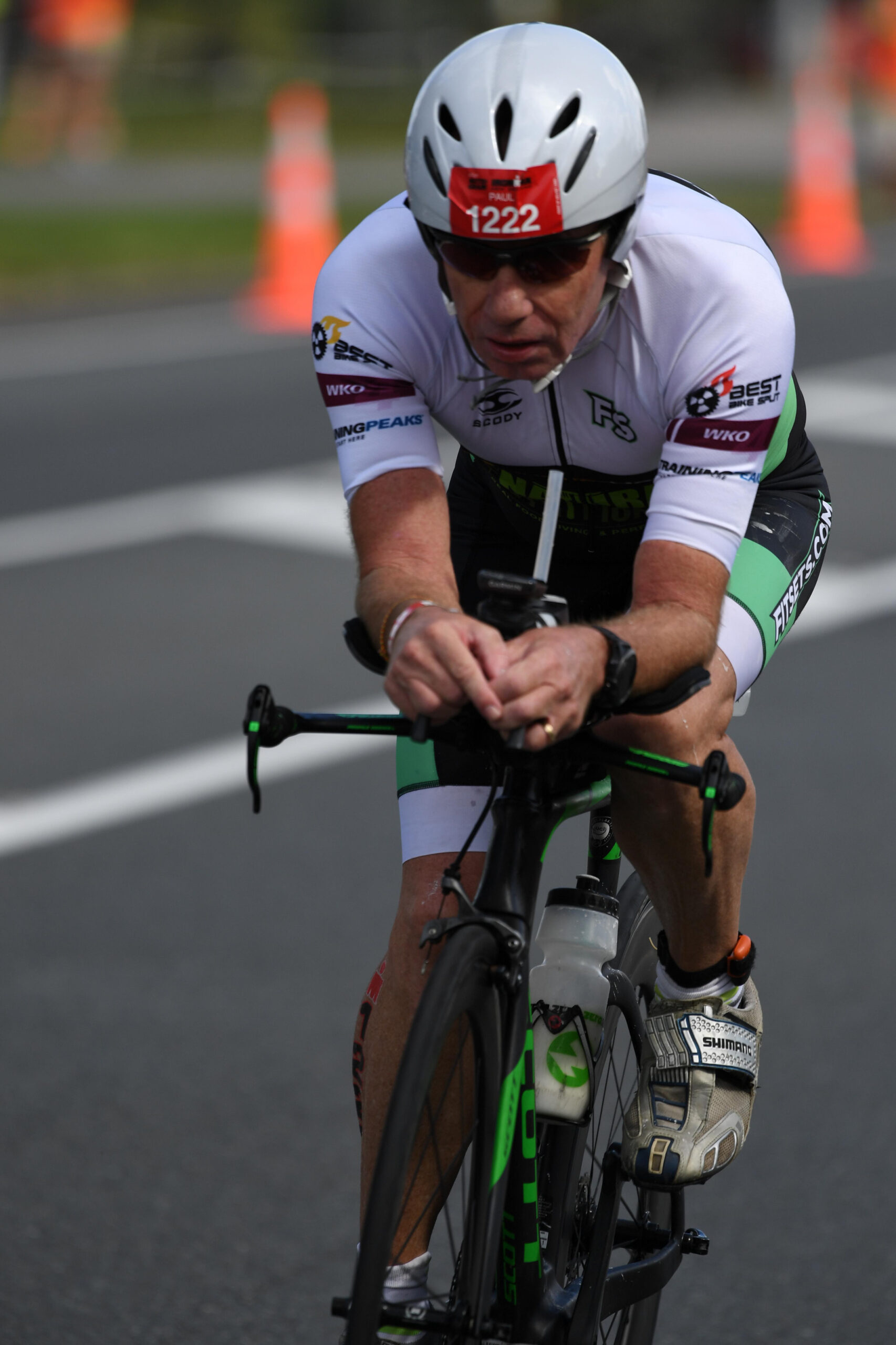
With bike fit there is a strong focus on the seat height, hip angles, Seat fore/aft adjustment as these do influence sustainable power application. For time trials the front setup is as important from a efficiency and economy perspective, especially for 3 to 6 hour races.
Focusing on power and aerodynamics as the priority can sometimes lead to a position that takes effort to hold and create stress that does not assist forward propulsion. I frequently come across triathlete who spend much of the latter stage of races sitting up due to accumulated discomfort in the neck, shoulders and lower back. 10 minutes sitting up and all gains from the aggressive position are lost!
A effective set-up of the front end should enable you to relax any joint and limb that don’t contribute to moving the bike forward.
You arms should triangulate you body between the seat and arm pads so that there is no forward or aft tension. You should be able to sink into the bike so the the seat post and handle bars take ALL of your body weigh. You legs should not be providing any lift and your forearms and upper arms should be totally relaxed. Th energy save with this setup is significant over a 70.3 or IRONMAN race.
With upper body tension non existent the lower back relaxes too allowing you to stay aerodynamic[ for the entire distance, unless you choose to sit up or stand for climbs.
In the image, from IRONMAN NZ taken a 95km in, you can see the setup I have achieved through many refinements. Hands are relaxed resting over the aerobars, no need to hold on due to the neutral fore/aft balance. Upper arms are triangulated so that they take all the weight without fore/aft tension. Elbows are only marginally inside the shoulders creating stability. Forearms, upper arms neck and jaw are relaxed.
With this setup I can also relax my lower legs including ankles and calfs as there is no effort to lift my weight. Seat comfort is also improved as there is little fore/aft tension, my total weight is on my sit bones without lateral tension, a primary cause of seat pain.
This position has been honed from hours on the stationary trainer based on feel. It is significantly different to the position recommended by a qualified fitter as my focus is on sustainability first, ahead of aerodynamics and power.
Honour the science for the seat height and hip angle, trust you feel for the front end setup. If you have any tension above the waist in the TT position on the stationary trainer then you are unlikely to stay aerodynamic for the duration and both your bike and run split will suffer.
